Charts of the Week
Current economic trends from 6 to 11 January 2021: registered unemployment, traffic of electronically tolled vehicles, electricity consumption, exports and imports of goods and production volume in manufacturing
The renewed spread of the epidemic and the adoption of containment measures in Slovenia and its main trading partners towards the end of last year have not had a significant impact on the export part of the Slovenian economy. In November, manufacturing output and exports to main trading partners within the EU increased and the favourable trend continued in December and at the beginning of this year according to some indicators. In December, business expectations regarding production and exports at the beginning of this year remained favourable; traffic on Slovenian motorways and electricity consumption were similar to the same period last year. Moderate growth in the number of registered unemployed, which started in December, continued at the beginning of January. With intervention measures remaining in place, the increase in the number of unemployed did not differ significantly from increases at the end of previous years, which had mostly been a consequence of seasonal factors.
Registered unemployment, January 2021
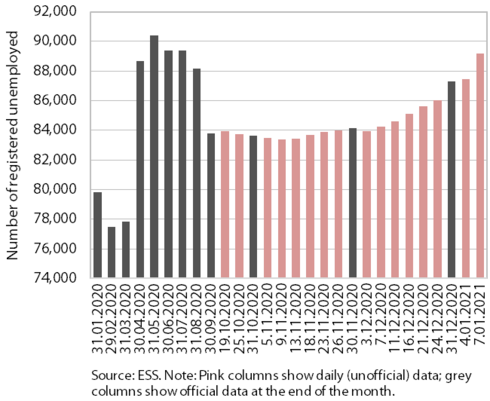
At the beginning of January, moderate growth in the number of registered unemployed continued. Following a pronounced increase in the first wave of the epidemic, the number of registered unemployed persons has been gradually falling since mid-year after the adoption of intervention job retention measures and the lifting of restrictions. Between September and November, it remained roughly unchanged, while in December it started to rise moderately. On 7 January, 89,177 persons were unemployed according to ESS unofficial (daily) data, which is 2.2% more than at the end of December and around 12% more than in the same period last year. With intervention measures remaining in place, the increase in the number of unemployed did not differ significantly from increases at the end of previous years, which had mostly been a consequence of seasonal factors. The smaller increase during the second wave of the epidemic (since mid-October) in comparison with last year’s spring months was, among other things, due to the presumably smaller decline in economic activity than during the first wave.
Traffic of electronically tolled vehicles on Slovenian motorways, January 2021
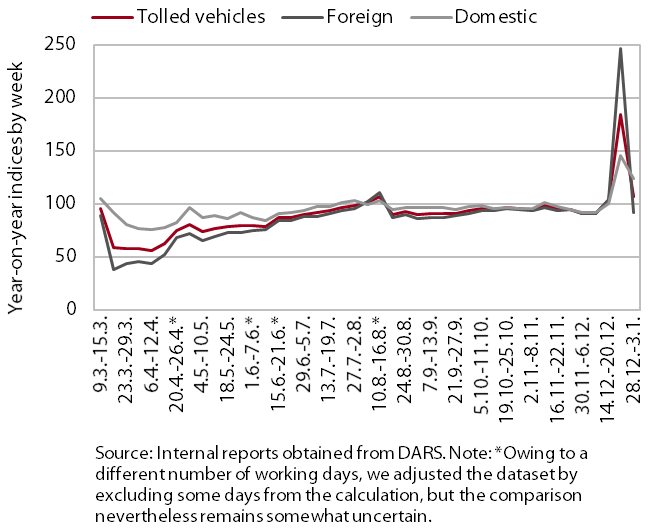
In the week at the transition to 2021, freight traffic on Slovenian motorways was significantly higher year on year, which is mainly related to the distribution of public holidays. Between 28 December and 3 January, traffic was 7% higher year on year. Domestic vehicle traffic was up 23%, while foreign vehicle traffic was down 8%. The higher traffic volume in the last two weeks of the year compared to the corresponding weeks in 2019 was mainly related to the different distribution of holidays during that period. In the last week of 2020, freight traffic otherwise reached only 30% of the annual weekly average; particularly the traffic of foreign vehicles was lower. A year-on-year comparison by month shows that traffic increased slightly in the last two months of the year, reaching 2019 levels in December for the first time since the beginning of the epidemic.
Electricity consumption, December 2020
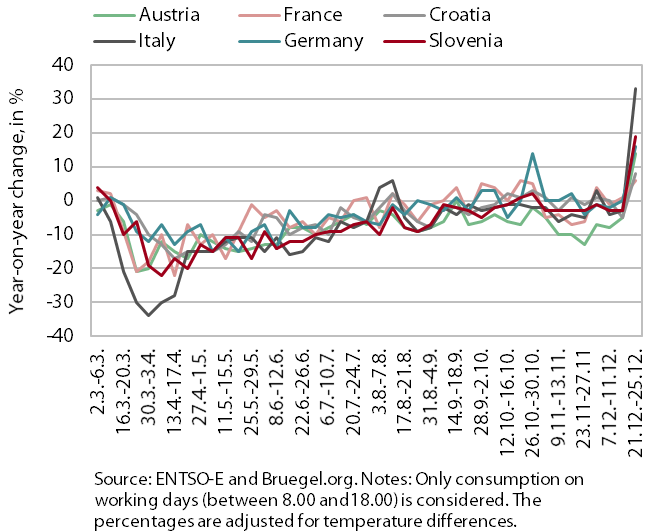
In the week before Christmas, electricity consumption was significantly higher year on year. Between 21 and 25 December, electricity consumption was 19% higher year on year, which we estimate was mainly due to a more favourable distribution of public holidays in 2020 from the aspect of the functioning of the economy (industry) and higher household consumption (remote work and schooling). High year-on-year growth was also recorded in our main trading partners (in Austria and Germany at around 15%, France and Croatia at around 7% and Italy even at 33%).
Exports and imports of goods, November 2020
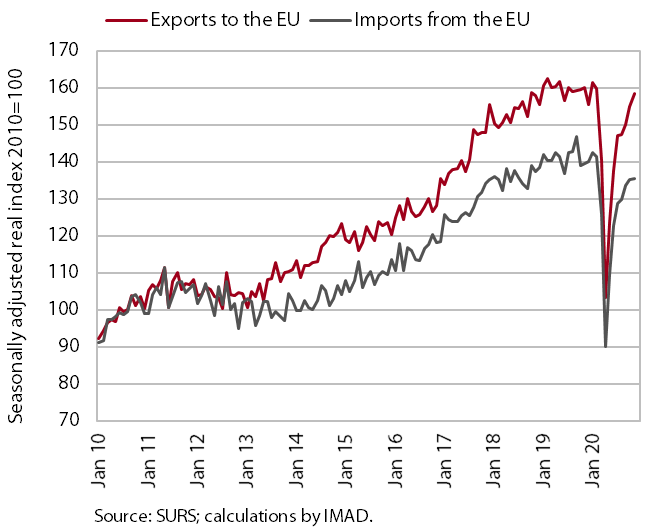
Goods trade continued to recover in the autumn months despite the unfavourable epidemiological conditions in Slovenia and the EU. The renewed spread of the epidemic and the adoption of containment measures in Slovenia’s main trading partners in October and November did not have a significant impact on export activity with EU countries. In November, real exports to the EU increased further and came close to pre-crisis levels. The recovery of imports came to a halt, which was mainly related to a fall in private consumption in Slovenia due to the adopted containment measures and, given the functioning of industrial activities, less to the imports of intermediates. In the first eleven months, imports from EU countries (-11.6%) declined more than exports (-9.9%). Export expectations did not change much in December relative to the previous few months, but companies were more optimistic about future foreign demand than during the first wave of the epidemic in the spring.
Production volume in manufacturing, November 2020
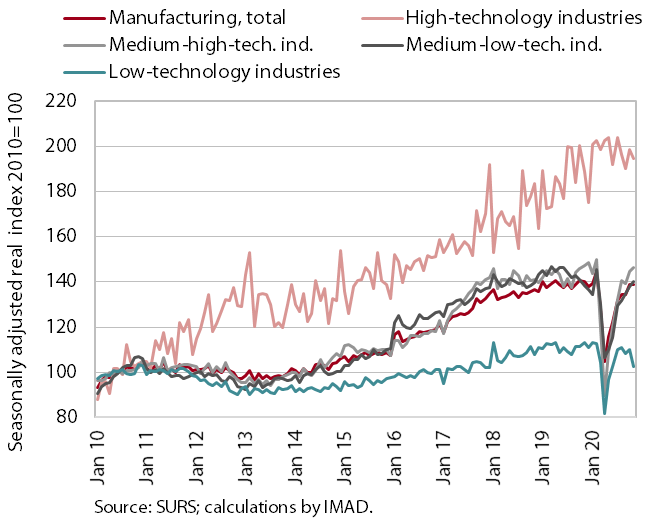
Manufacturing production increased further towards the end of last year, despite the worsening of epidemiological conditions in Slovenia and the EU. Growth was mainly driven by medium-technology industries, which in November again exceeded the levels of the same period last year. The recovery remained slowest in the manufacture of motor vehicles, where production still lagged behind that in the same period last year. On the other hand, production in the metal industry and most other industries producing intermediate goods has increased markedly in recent months. In November, they mostly exceeded last year's levels (particularly the rubber and chemical industries). Production in high-technology industries, which was the least affected during the first wave, remained high. Production in low-technology industries declined in November and was also lower year on year, except in the wood processing industry. The prospects remain favourable, as most of the enterprises surveyed also expect production growth at the beginning of this year.
